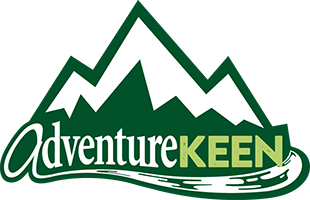Stan’s Nature Smart Column – Sea Otters
For whatever reason, some wild animals are near and dear to people’s hearts. They have a universal appeal, resulting in admiration across the masses. For example, many are obsessed with owls. Any kind of owl. Big ones, small ones, it really doesn’t matter.
The same can be said for other wild critters, such as otters. For whatever reason, everyone seems to love otters. This was on full display last week while I was leading a photographic tour of bald eagles and sea otters in Alaska. For five days, my small group of photographers spent 6 hours a day photographing bald eagles and sea otters.
There are 13 species of otters in the world, ranging in size from the small-clawed otter, which is less than 3 feet long, to the giant otter, which stretches 6 feet long. All otters are semiaquatic or marine mammals in the Weasel family. They can be found on every continent, except for Antarctica and Australia.
The sea otter (Enhyrda lutri) is the heaviest of the otter species. Males can weigh upwards of 100 pounds. Females are noticeably smaller. This makes sea otters the heaviest of the Weasel family but also makes them one of the smallest of all the marine mammals. When you get up close to a sea otter, you notice right away that they are very large animals, reaching 4-5 feet long, including their short tail.
They live in cold ocean environments, and their primary form of insulation from the cold water is not fat but, rather, fur. They have an exceptionally thick coat of fur, the densest in the animal kingdom. They have up to 1 million hairs per square inch covering their body. The density of the fur prevents water from reaching the body. Otters have two layers of fur: a dense underfur for insulation and longer guard hair that helps keep water off the underfur.
Sea otters lack blubber, a fatty layer that is common in other marine mammals. Pups are born with a buoyant coat of fur that helps them float. However, this very fur almost killed off the sea otter. Starting in the mid-1700s, sea otters were killed for their fur. By the mid-1900s, populations were down to only 1,000 to 1,500 total animals alive. It was believed that the sea otter would become extinct due to uncontrolled trapping. Recovery has been slow, and now there are small populations in 13 regions around the world, from Japan to Russia, British Columbia, California, and Alaska.
To maintain their warmth and life in the ocean, sea otters consume at least 20% of their body weight in marine invertebrates such as sea urchins, sea cucumbers, mollusks, clams, and mussels. Surprisingly, unlike river otters, fish are not a big part of their diet, although they occasionally eat birds such as loons and grebes.
Like others in the Mustelid family, sea otters reproduce at any time of year. This means that young otters are born even in the middle of winter. We spent many days on a boat looking for the sea otters and found several mothers with babies, which made for some adorable images. When we approached in the boat, the mother otters seemed to be more curious than cautious. They floated around on their backs, holding their babies to their chests with their front paws. Using a very long lens, we were able to capture some intimate moments between mother otters and pups. Until next time…
Stan Tekiela is an author, naturalist, and wildlife photographer who travels extensively to study and photograph wildlife. He can be followed on www.instagram.com and www.facebook.com. He can be contacted via his website at www.naturesmart.com.






